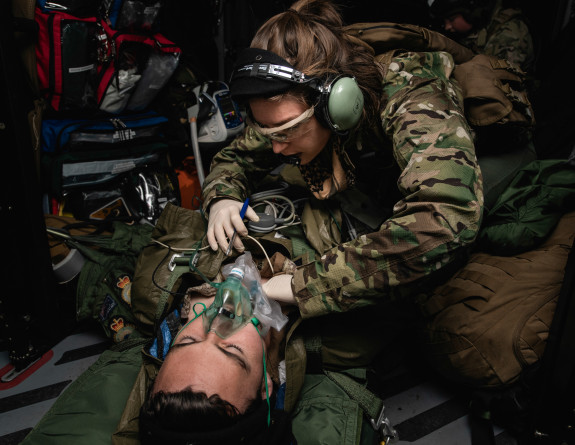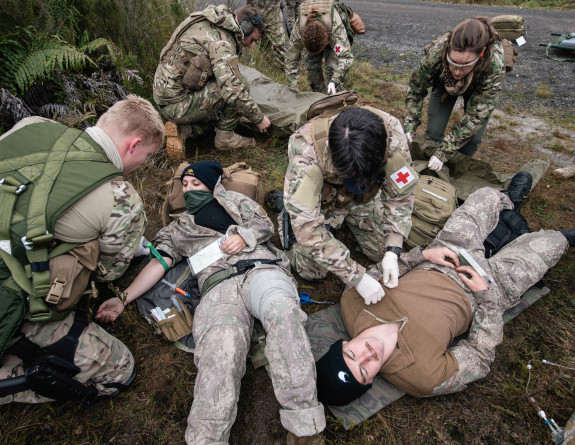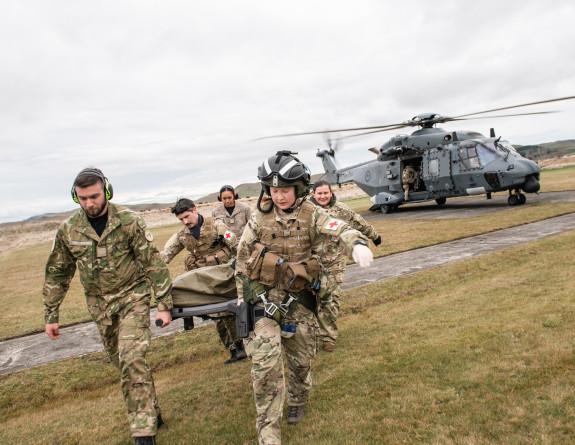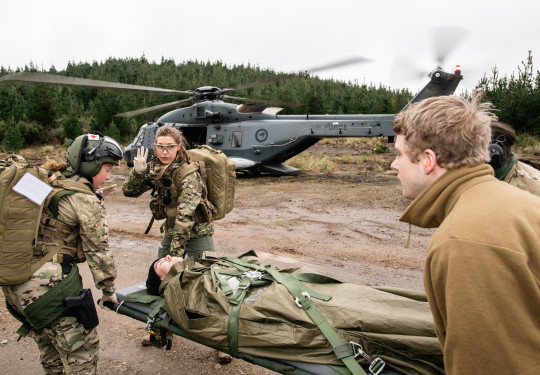Facing down the threats
Royal New Zealand Air Force's Detachment Commander Squadron Leader Dan Pezaro said the annual readiness training mirrored real life situations No. 3 Squadron has been called to.
01 July, 2022
The squadron has been called upon many times in the past to aid developing nations, especially when there has been challenges to the international rulesbased order and stability of government.
“In this exercise we created some fictional nations with a contested area that we were operating in, supporting a hypothetical national election through security and logistics support.”
MAG 58 machine guns were fitted to the NH90 helicopters and all personnel in exercise were armed.
The military-focussed tactical scenario practised humanitarian assistance and stability augmentation operations, in line with the Government’s Pacific plan, Squadron Leader (SQNLDR) Pezaro said.
“One of the simulations involved some hostile people operating in a contested area of land within one of the nations. They were operating with mostly small arms threats to our NH90 helicopters, so we used tactics to avoid the threats through either low-flying or staying high and away from the areas with known enemy activity. We’re also using the aircraft’s self-defence systems to mitigate any threats that are posed.”
The NH90s are fitted with an electronic warfare suite that can be used against a threat to the aircraft of up to and including surface-to-air missiles and other guided devices.



Aeromedical training as part of Exercise Steel Talon
Included in the exercise were enabling units including the refuelling unit, logistics, security forces and medics. NH90 co-pilot Flying Officer (FGOFF) Brandon Marr spoke to us at the beginning of the exercise and said they had set up a base of operations and crews were planning missions, delegating jobs and briefing teams.
“We get intelligence updates every day that tell us where any enemy forces may be in the area where we’re operating. Whatever the job entails we’re always curious as to where they might be. So it’s up to our intelligence team to tell us where they could potentially be or where they have been spotted.”
Aircrews would be on the lookout for both enemy personnel and electronic warfare systems, FGOFF Marr said.
“Hostile forces attempting to blend in with the civilian population are a major threat in this environment when we go out on a mission.”
“They could be using radars to track us or there could be issues with our radios being jammed so we won’t be able to talk with our command back at base.
“Likewise, there could be hostile scouts reporting when we’re approaching a landing zone, meaning that enemy forces could then engage us on the ground when we are vulnerable,” he said.
“It’s exciting to see another side of what we can do in the NH90 and how we can support nations in the Pacific.”
One of the big challenges the exercise would face in Waiouru would be the weather, which was unpredictable during winter, he said.
“It can be sunny one moment and then low cloud and rain can roll in the next minute. It makes our decision-making a little bit harder on when to fly and do the mission, or if we wait the weather out.”
Helicopter loadmaster Corporal (CPL) Jarrod Milligan said the exercise was an opportunity to consolidate all previous training.
“So it could be moving personnel and equipment around the battlefield, building a greater awareness of the threat environment, and what our response is when we use door guns.
“I did MAG 58 training a few months ago, it’s really the first opportunity to use it in a battlefield scenario. The battlefield support element is one of our main outputs, so deploying here and being away from Ohakea is our way of showing we can do it.”
Being able to train in battlefield conditions over the past few years had been limited because of COVID-19, so getting back into the training was welcome, CPL Milligan said.
Inclement weather would be a big challenge to the team and could result in low-flying.
“We will need to maintain safety at all times. And the enemy threat is always present here. A lot of lessons are being learned about the systems in the aircraft and how we can implement them better.
“I’m looking forward to getting out there with the troops and providing the output that we’re here to do. It’s a real joint exercise with the Army and we rely heavily on them – they are the element that we’re supporting. It’s always great to train together.”
